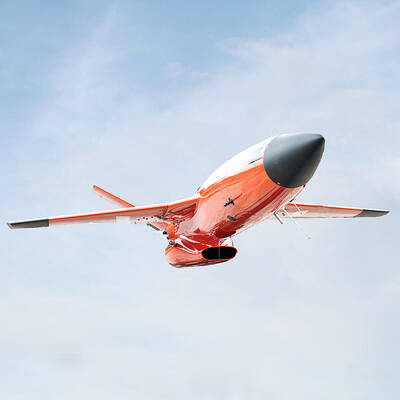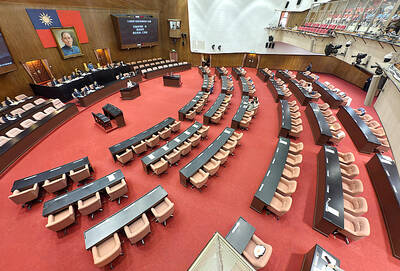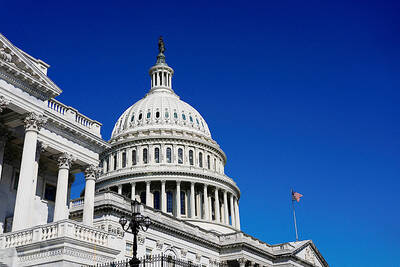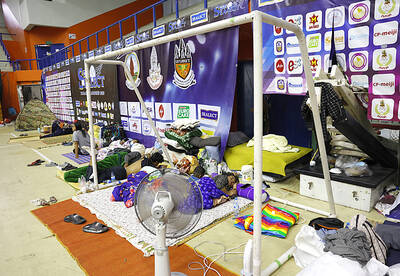The shaky global economy needs Japan and China to be fully engaged, the head of the IMF said recently, warning the world could not afford to have the two countries distracted by their bitter territorial dispute.
Speaking to Japanese media ahead of the fund’s annual meeting in Tokyo next week, IMF Managing Director Christine Lagarde said the two had to show a bit of neighborly tolerance for the good of everybody.
“Both China and Japan are key economic drivers that do not want to be distracted by territorial division,” Kyodo News agency quoted Lagarde as saying in Washington, in an interview published yesterday.
China and Japan, the world’s second and third-largest economies, have been at loggerheads for months over the Diaoyutai Islands (釣魚台), in the East China Sea.
Tokyo administers the chain under the name Senkakus, but they are also claimed by Beijing and Taipei.
Chinese government ships regularly venture into waters around the islands, ignoring orders to leave from the Japanese coastguard.
Three such maritime surveillance ships entered territorial waters off the islands for the second straight day yesterday, Japanese coast guards said.
The three ships were off Kubashima islet, but left the immediate area soon after 3pm, the Japanese coast guard said.
The increasing frequency of spats comes ahead of next week’s IMF and World Bank meetings in Tokyo — the world’s largest single gathering of finance officials, bankers and non-government organizations.
Dow Jones Newswires reported on Tuesday that several big Chinese banks had canceled their participation in events connected to the meetings, in what it said was a sign of the row spreading into the economic realm.
Most of the banks have not given a reason for their last-minute pullouts, but one unidentified person was explicit:
“Quite frankly, it’s Japan-China relations,” Dow Jones quoted an official at the Tokyo branch of the Agricultural Bank of China as saying.
In related news, two of the US Navy’s global force aircraft carrier strike groups are currently patroling the Western Pacific within distance of the South and East China Seas, providing “a combat-ready force that protects and defends the collective maritime interest of the United States and its allies and partners,” the US Seventh Fleet said.
US Navy officials said the USS George Washington carrier strike group had begun operating near the East China Sea while the John C. Stennis Strike Group (JCSSG), led by the USS John C. Stennis carrier, is now operating near the South China Sea, also the scene of sovereignty disputes involving China, Taiwan, Vietnam and the Philippines.
US Pacific Command (PACOM) said the JCSSG paid a scheduled port visit at Kota Kinabalu in Sabah, Malaysia, on Sunday. This was the first visit by a US carrier in Sabah, which adjoins the South China Sea.
In addition, the USS Bonhomme Richard forward-deployed amphibious assault ship, with about 2,000 US Marines on board, is said to be operating in the Philippine Sea.
All three carrier battle groups were in joint live-fire exercises with the Japanese Self-Defense Forces last month near Guam.
A PACOM spokesman said the exercises and deployments were not necessarily related to the Diaoyutais dispute.

The Chien Feng IV (勁蜂, Mighty Hornet) loitering munition is on track to enter flight tests next month in connection with potential adoption by Taiwanese and US armed forces, a government source said yesterday. The kamikaze drone, which boasts a range of 1,000km, debuted at the Taipei Aerospace and Defense Technology Exhibition in September, the official said on condition of anonymity. The Chungshan Institute of Science and Technology and US-based Kratos Defense jointly developed the platform by leveraging the engine and airframe of the latter’s MQM-178 Firejet target drone, they said. The uncrewed aerial vehicle is designed to utilize an artificial intelligence computer

The Chinese Nationalist Party (KMT) caucus yesterday decided to shelve proposed legislation that would give elected officials full control over their stipends, saying it would wait for a consensus to be reached before acting. KMT Legislator Chen Yu-jen (陳玉珍) last week proposed amendments to the Organic Act of the Legislative Yuan (立法院組織法) and the Regulations on Allowances for Elected Representatives and Subsidies for Village Chiefs (地方民意代表費用支給及村里長事務補助費補助條例), which would give legislators and councilors the freedom to use their allowances without providing invoices for reimbursement. The proposal immediately drew criticism, amid reports that several legislators face possible charges of embezzling fees intended to pay

REQUIREMENTS: The US defense secretary must submit a Taiwan security assistance road map and an appraisal of Washington’s ability to respond to Indo-Pacific conflict The US Congress has released a new draft of the National Defense Authorization Act (NDAA), which includes up to US$1 billion in funding for Taiwan-related security cooperation next year. The version published on Sunday by US House of Representatives Speaker Mike Johnson removed earlier language that would have invited Taiwan to participate in the US-led Rim of the Pacific Exercise (RIMPAC). A statement on Johnson’s Web page said the NDAA “enhances U.S. defense initiatives in the Indo-Pacific to bolster Taiwan’s defense and support Indo-Pacific allies.” The bill would require the US secretary of defense to “enable fielding of uncrewed and anti-uncrewed systems capabilities”

Renewed border fighting between Thailand and Cambodia showed no signs of abating yesterday, leaving hundreds of thousands of displaced people in both countries living in strained conditions as more flooded into temporary shelters. Reporters on the Thai side of the border heard sounds of outgoing, indirect fire yesterday. About 400,000 people have been evacuated from affected areas in Thailand and about 700 schools closed while fighting was ongoing in four border provinces, said Thai Rear Admiral Surasant Kongsiri, a spokesman for the military. Cambodia evacuated more than 127,000 villagers and closed hundreds of schools, the Thai Ministry of Defense said. Thailand’s military announced that